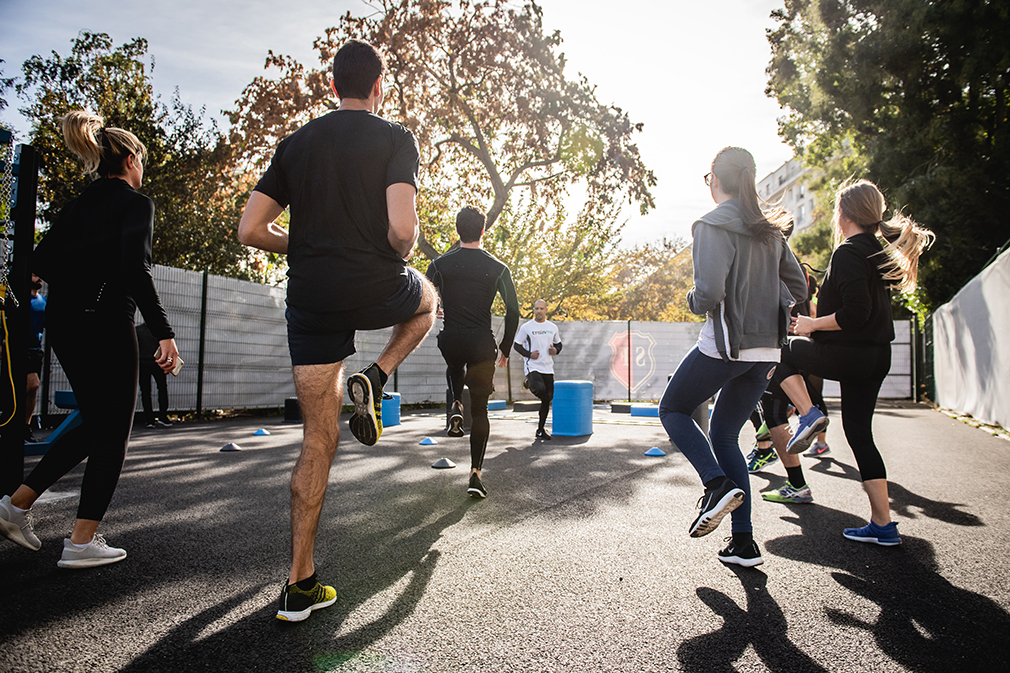After all the indulgences with family and friends over the holidays, if you are struggling to get back into a fitness routine, you’re not alone. In fact, research has uncovered that December is the quietest calendar month at the gym, so it’s crucial to start the preparation early.
The experts at Fitness Volt – a comprehensive online resource dedicated to Strength Sports, from healthy eating to exercise – are here to help you get focused and have highlighted five tips to ease yourself back into a workout routine after the festivities.

Set specific times
Scheduling your workout time is a simple yet effective step. Getting back into the right frame of mind after the Christmas buzz is just one of the ways you will have to readjust, and it can certainly take its toll on you. So, without a gym schedule, it’s likely that you will make plenty of excuses to not partake in any exercise. Consider your day-to-day schedule and choose your workout slot based on where you have the most free time – this way, you can mentally prepare yourself as well as avoid any excuses that you are too busy. Plus, a planned exercise slot will ensure that your workload won’t take over, as it’s a given that you will be getting back into a busy work routine, too.
Don’t overexert yourself
While pushing yourself is usually encouraged in fitness, it’s sensible to not push yourself to the extreme, particularly after some time away from exercise. Whether it’s weightlifting or cardio, doing too much exercise can lead to overuse injuries including muscle strains and tendon injuries, thus making you a lot less capable of meeting your fitness goals. After some time off, it’s natural to not be able to lift as heavy or run as far – so it’s crucial to not let it discourage you, as you will soon gain your ability if you stay consistent with your exercise. As well as this, overdoing it can lead to burnout in the early stages and make you dread a workout as opposed to enjoying it. If you feel yourself giving up, try to commit to five minutes and finish your workout if you don’t feel capable of doing anymore; but this five-minute rule, it will likely motivate you to do more.

Personalize your workout
Fitness lovers aren’t necessarily all gym-goers. In fact, there’s plenty of ways to workout which don’t involve the gym – and this is key for making it an enjoyable part of your routine again. If you’re a nature enthusiast and wish to do more cardio exercises, go for a run – or even a walk – at your local beach, local park, or even around the block. Alternatively, if you’re into strength training but don’t enjoy the gym atmosphere, invest in equipment such as dumbbells and kettlebells to work out from the comfort of your own home. I

Partner up
Finding a friend with similar fitness goals is beneficial for many reasons, one being that it acts as motivation after some time away. For the days that you don’t feel like exercising, a fitness partner can motivate you to get ready and get it done – plus, during a workout, your partner can even push you to take it to the next level, such as lifting a slightly heavier weight or increasing the incline setting on the treadmill. Having a partner can also keep you accountable to stay on track of your fitness plan, and recognize any goals that are yet to be met. Better yet, it makes it a time to socialize so that you look forward to it more, not to mention your partner can spot you to make your workout safer.

Set short-term goals
It’s always important to think of the long-term result; doing so allows you to plan your workout and figure out which exercises are best suited to your needs. However, having only a long-term goal can become frustrating when you aren’t seeing progress straight away, and can even result in you giving up completely – which is especially easy to do when you’re trying to get back into your routine. Therefore, it’s vital to set goals over shorter time frames that are manageable, as well as not just focusing on your appearance. For example, you may wish to become stronger, so a short-term goal for the end of a month could be to increase your squat load by 45 lbs.

Winter safety tips for the outdoors
With snow and ice guaranteed for many locations throughout the winter, it is important take safety into consideration when exercising outdoors. Matthew Magnante, an exercise author at FitnessVolt, has compiled a list of his most important safety tips to keep in mind when exercising outdoors during the colder months.
Drink even if you don’t feel thirsty
Many may not realize this, but we are at an elevated risk of dehydration when exercising in colder temperatures.
When it is cold, our blood vessels constrict to reduce the amount of heat lost through our skin, as a way of maintaining our core body temperature.
During this process, a hormone called plasma arginine vasopressin (AVP) which normally signals thirst, is secreted at a lower rate than when exercising in hot weather. This explains why you might find yourself craving water less when exercising in winter. Research has found that exposure to cold weather can reduce our thirst sensation by as much as 40%.

To prevent dehydration, continue to drink water as you would during summer and opt for a glass of water before heading out and continue to sip on a drink throughout and after your workout.
Additionally, don’t forget to fuel your body with food before exercising outdoors. You typically burn more calories in cold weather to maintain your core body temperature, so it’s important to prioritize nutrition if you want to maintain energy throughout your workout.

Opt for polyester over cotton t-shirts
If you find yourself prone to sweating while exercising, cotton is one of the worst materials you can wear when the temperatures drop.
Cotton is highly absorbent which means that as you sweat the material tends to stay wet rather than drying out. Water conducts heat away from the body up to 25 times faster than air, which means you will lose body heat much more quickly in colder temperatures and increase your risk of developing hyperthermia.
Moisture-wicking materials such as polyester or wool will keep you warmer because their fibers absorb less water, and dry out more quickly. Polyester fibers are designed to insulate you even when wet by trapping a layer of air between the fabric and your skin, while the shape of its fibers are designed to remove water.
A three-tier layering system works best, comprised of a base layer such as polyester, a main layer such as wool and a waterproof outer layer that repels rain, snow and wind. This way you create multiple layers of insulation while allowing sweat to move through the layers and evaporate into the air rather than clinging to your clothes.

Stretch before and after exercise
Stretching before you exercise is particularly important in winter, as your muscles tend to contract to conserve heat, which makes them more prone to injury.
Try to incorporate dynamic stretches before you head out for a winter run, to increase your muscles’ internal temperature and reduce the risk of injury.
Body weight squats, calf raises, and good old-fashioned jumping jacks are effective dynamic stretches that get the blood flowing and increase your core body temperature before you head outside.
Post-workout, you want to perform static stretches, which require you to stretch and hold a muscle group for 15-30 seconds. Static stretches also help to reduce injury but should only be used as part of a cool-down routine, to help lower your heart rate and relax your muscles. Common static movements include hamstring stretches, quad stretches and calf stretches.

Cut your sessions in half
Running on snow and ice engages different muscles to running on dry ground, due to the reduced friction and uneven surfaces. Consequently, you are likely to put yourself at risk of injury if you try to complete your regular running distance without first adapting to the new conditions.
A good rule of thumb when running on icy routes is to halve your regular running distance until you have adapted to running on slippery or uneven surfaces. Allow yourself 4-6 weeks of regularly running on snow or icy terrain, before you start to build back up to your regular running distance.
Reducing the distance between each step will also help to keep your feet under your center of gravity and allow you to recover more easily should you lose your balance. As you become more comfortable on these surfaces, you can gradually widen back up to your regular stride.
Let someone know where you are going
Even for the most confident among us, it is important to let someone know where you are going before you head out on a walk or run during winter.
For iPhone users, you can temporarily enable location sharing on the Find My app which will enable family, friends or your partner to track your location should you slip and injure yourself while exercising on ice or snow.









